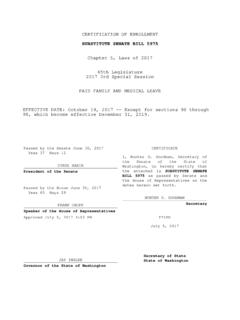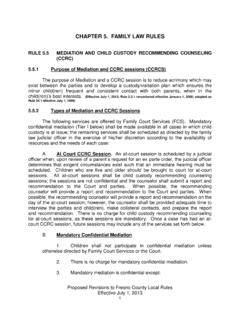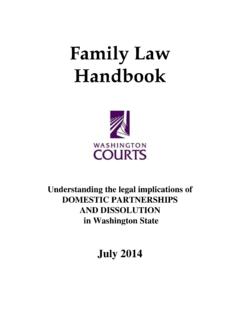Transcription of Chapter 5. Family dispute resolution - aifs.gov.au
1 93 Evaluation of the 2006 Family law reformsFamily dispute resolution5 Family dispute resolutionAs outlined in Chapter 1, a key aspect of the 2006 changes to the Family law system was to require parties who could not otherwise agree on post-separation parenting arrangements to attend Family dispute resolution (FDR) to attempt to resolve disagreements over parenting ar-rangements prior to lodging an application with a court. Chapter 4 provided an overview of pathways to FDR and other services. This Chapter examines operational aspects of FDR and relates to policy objectives 2 and 3 of the 2007 Evaluation Framework (Appendix B) concerning encouraging greater involvement by both parents in children s lives after separation, and also protecting children from violence and abuse; and helping separated parents agree on what is best for their briefly summarising circumstances that prompt exceptions and the issue of certificates, and key factors that inform contemporary practice, this Chapter documents agreement rates, the content of agreements, and rates of satisfaction with the FDR process.
2 It was found that most respondents from a large representative survey of parents who had used FDR (the Longitudinal Study of Separated Families Wave 1 [LSSF W1] 2008) had sorted out disputes by the time of the survey an average of one year after separation. The data also show how agreement rates, satisfaction with and the viability of FDR are strongly linked to how practitioners manage and are perceived to manage questions of violence and Family addition, the Chapter provides an evaluation of the appropriateness of referrals into FDR services and the ongoing judgments that must be made by FDR practitioners in balancing the safety of parents and children with effective child-focused processes.
3 The circumstances in which certificates are issued are also on FDR was obtained from the following sources: Family Pathways: The Longitudinal Study of Separated Families Wave 1 2008 (LSSF W1 2008); Family Pathways: Looking Back Survey (LBS); Family Lawyers Survey (FLS) 2006 and 2008; Qualitative Study of Family Relationship Service Program (FRSP) Staff; Online Survey of FRSP Staff 2009; Survey of FRSP Clients 2009; and FRSP Online Database 2006 A note on FDR with exceptions and certificatesFor parents in dispute over their children following separation, exceptions to the requirement to participate in FDR include: applications for orders that are made with the consent of the parties (s60I(9)(a)(i)); circumstances in which there are reasonable grounds to believe that: there has been child abuse by one of the parties to the proceedings (s60I(9)(b)(i)); there would be a risk of abuse to the child if there was a delay in an application being made to court (s60I(9)(b)(ii)); there has been Family violence by one of the parties to the proceedings (s60I(9)(b)(iii)).
4 There is a risk of Family violence by one of the parties to the proceedings (s60I(9)(b)(iv)); and the application is made in circumstances of urgency (s60I(9)(d)); and94 Australian Institute of Family StudiesChapter 5 applications for orders in proceedings in which a certificate issued by an FDR practitioner has already been filed ( of the Family Law Regulations 1984).In circumstances where these exceptions apply, the parties may lodge an application in court without attempting FDR, although judicial officers also retain the discretion to refer the parties back to attempts to reach an agreement in FDR are unsuccessful or a matter is judged at the outset not to be suitable for this form of intervention, then an accredited FDR practitioner may issue a certificate to their clients that will then enable them to access the court There are five grounds for issuing such certificates: a party attended FDR but the other party refused or failed to attend; a matter was considered inappropriate for FDR by the practitioner.
5 FDR was attended by both parties and a genuine effort was made to resolve the dispute ; the parties attended FDR but a party or parties did not make a genuine effort to resolve the dispute ; and the parties began FDR, but it was considered by the practitioner that it would not be ap-propriate to continue A note on terminology and changing practiceSection 10F of the SPR Act 2006 defines Family dispute resolution as a process (other than a judicial process) (a) in which a Family dispute resolution practitioner helps people affected by separation and divorce to resolve some or all of their disputes with each other; and (b) in which the practitioner is independent of all the parties involved in the analysing the data that follow, it should be borne in mind that parents may not distinguish between FDR delivered by accredited FDR practitioners and a range of other Family mediation services, or even between FDR and more directed negotiations between lawyers.
6 Indeed, some parents are more likely to recall who provided the service and with what result than what the service was called or via which organisation or profession it was delivered. It is also impor-tant to note that although the principles and accreditation arrangements informing FDR have become increasingly standardised (see footnote 1), procedures continue to vary according to the nature of the dispute and the philosophy that guides the practitioner and their , divorce mediation began as a process predominantly facilitated by a mediator who implicitly or explicitly assumed from the outset that parents were capable of representing their children and capable of representing themselves ( , Haynes, 1981).
7 But the data on levels of violence, safety concerns and other dysfunctional behaviours identified in this Chapter and Chapter 10 strongly suggest that many parents currently participating in FDR would not have been suitable candidates for these earlier mediation models. Since the mid- to late 1990s therefore, mediators in Family disputes over children (more recently called FDR practitioners) have continued to develop approaches and strategies aimed at safely widening the scope of the work and permitting a larger percentage of separating and separated families to make use of these processes. Increasingly sophisticated intake procedures have been developed that are aimed at determining readiness and capacity to Methods of formally addressing 1 Since 1 July 2009, FDR practitioners who wish to issue certificates need to meet accreditation standards set out in the new Family Law ( Family dispute resolution Practitioner) Regulations 2008.
8 The new standards include competency-based qualifications developed for the Family relationships sector. The three pathways to accreditation are: (a) completion of the full Vocational Graduate Diploma of Family dispute resolution (or the higher education provider equivalent); (b) an appropriate qualification or accreditation under the National Mediator Accreditation Scheme and competency in the six compulsory units from the Vocational Graduate Diploma of Family dispute resolution (or the higher education provider equivalent); or (c) to have been included in the Register before 1 July 2009 and to have gained competency in the three specified units (or the higher education provider equivalent).
9 The three specified units that require competency are to: (a) respond to Family and domestic violence in Family work; (b) create a supportive environment for the safety of vulnerable parties in dispute resolution ; and (c) operate in a Family law More specifically, under regulation 25 of the Family Law ( Family dispute resolution Practitioner) Regulations 2008, before providing FDR, practitioners must be satisfied that an assessment has been conducted of the parties to the dispute and FDR is appropriate. In determining whether FDR is appropriate, the FDR practitioner must be satisfied that consideration has been given as to whether the ability of any party to negotiate freely in the dispute is affected by any of the following matters: the history of Family violence, if any, among the 95 Evaluation of the 2006 Family law reformsFamily dispute resolutionpower imbalances during the process itself have also been developed, including imbalances that arise out of certain categories of past or present violence (Cleake, Bickerdike & Moloney, 2006; Kelly, 2007).
10 Early forms of divorce mediation were also characterised by an emphasis on mediator control of the process and a corresponding neutrality or low level of investment in the specifics of the Mediator responsibility for the process remains a characteristic of most media-tion models. But under the Family law reforms, FDR practitioners are not neutral with regard to outcomes for children. Rather, they are required to actively support the best interests of the child. They typically do this by providing information before and during the process about the intentions of the legislation, about the disadvantages (in most cases) of litigation, and especially about the seriously negative consequences for children of entrenched and high parental con-flict, violence or other seriously dysfunctional addition, while attempting to maximise the autonomy of parents arguably a key aim of all mediation models contemporary FDR practitioners also attempt to actively represent children, either directly by working with child consultants (child-inclusive practice)
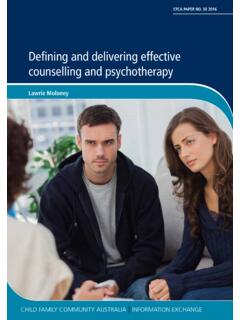
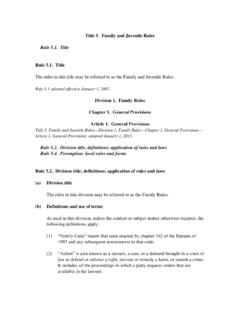
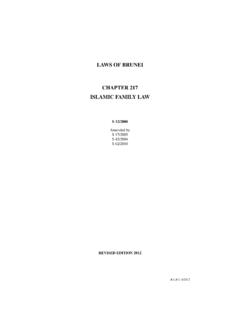
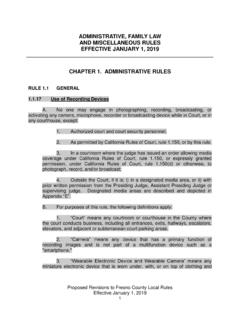
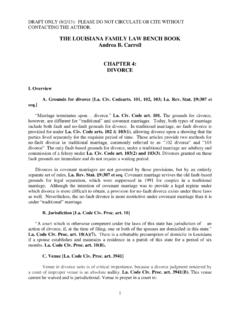
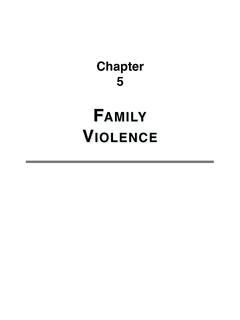
![CHAPTER 5 - [OFFENSES] - indianlaw.mt.gov](/cache/preview/a/f/b/0/c/0/0/b/thumb-afb0c00bde8407c6a9ae0a4fc2364016.jpg)
